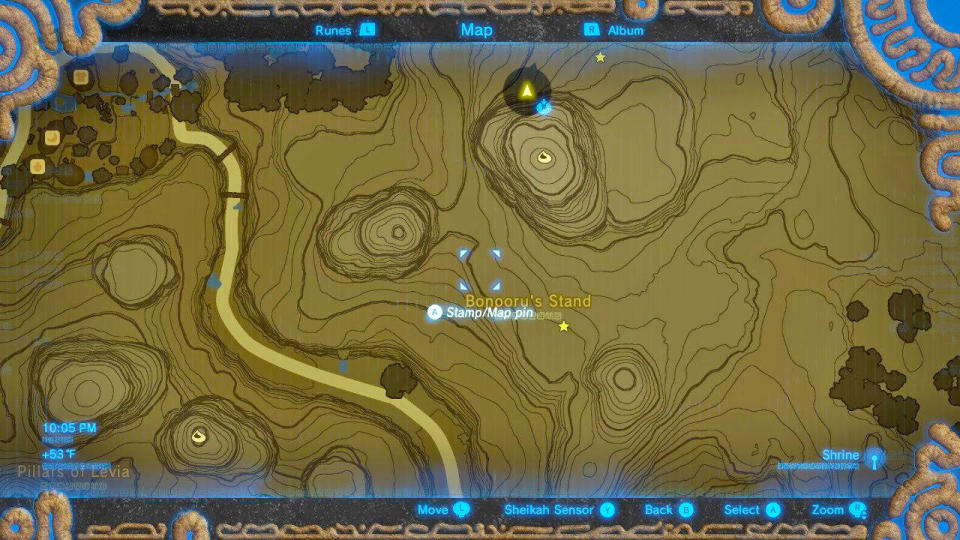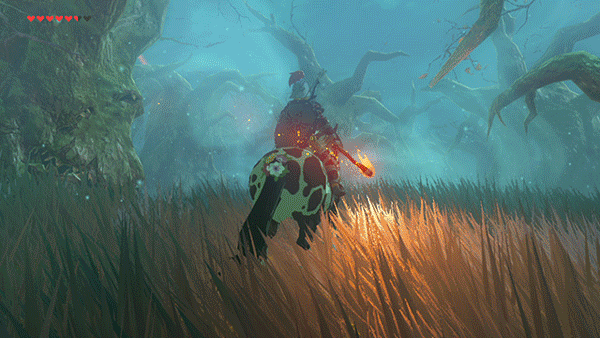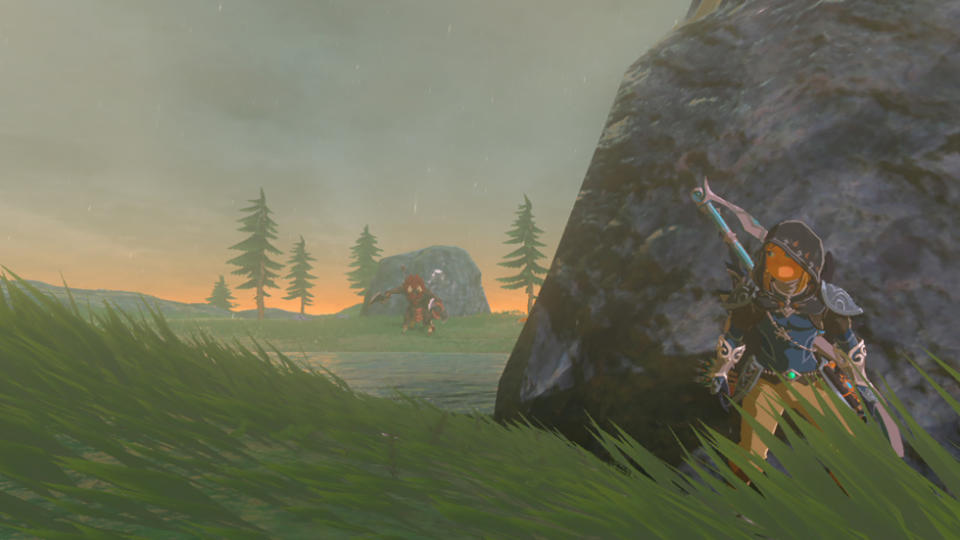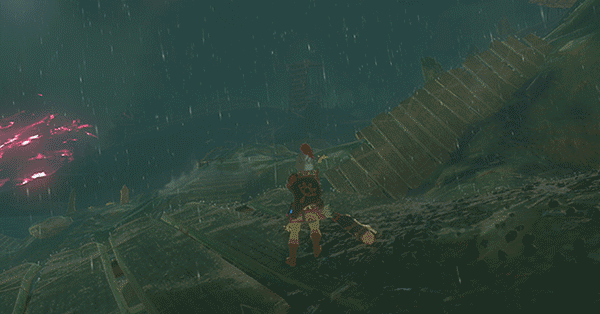'Zelda: Breath of the Wild' makes open-world games exciting again
It's much more about the joy of discovery than it is about the conquest and exploitation of a digital landscape.
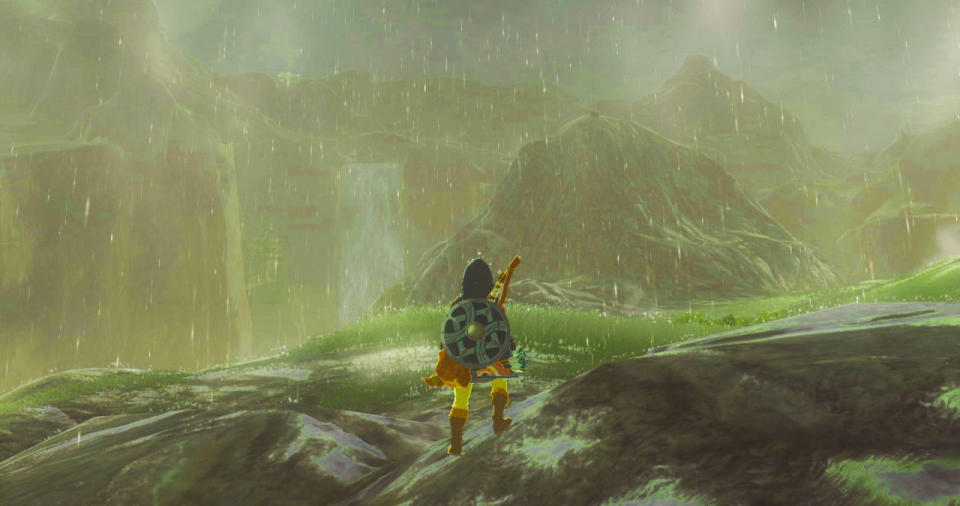
At this point, The Legend of Zelda: Breath of the Wild has become a video-game phenomenon. Much has been said about how it's a new take on the dusty old Zelda formula, or on how it represents a fresh direction for Nintendo in general, by buoying its new Switch console. But Breath of the Wild deserves just as much credit for how it subverts and reaffirms the power of the open world. There are two key hallmarks of the open-world genre: There is a big map to freely traverse, and there's a lot of stuff to do on that map. It's a formula that's been refined over the past few iterations of Grand Theft Auto, Assassin's Creed, Elder Scrolls and Far Cry, among others of that ilk. Over time, these open worlds have become increasingly cluttered with gameplay to-dos: waypoints, mini-games, races, collectibles, camps to clear and chunks of the map to color in. The result is that they tend to blend together into a mélange of similar gameplay beats. The location itself ends up becoming secondary: Whether you're in steampunk London or in GTA's funhouse version of Hollywood, you're basically chasing the same waypoints and obsessively collecting the same shiny thingies. But Breath of the Wild dumps most of this typically calcified open world stuff, and replaces it with a different kind of video-game pleasure: the joy of exploration. So much of Breath of the Wild is, for me, finding a route up a cliff face, or stopping to watch the sunrise, or just listening to the whistle of the wind and the scurry of critters in the brush. Breath of the Wild sets the stage for this meditative experience first and foremost through its map. It's clear and functional, complete with useful topographic rings (contrast that against, say, Horizon Zero Dawn's colorful but unhelpful paint smear). The map is also, at first, blessedly free of icons; aside from the odd waypoint, the only markings on it are the ones you choose to put there yourself. (I should note that I've chosen to turn off the mini map.) The seemingly minor decision to restrict what the map communicates -- which at first feels like it's grating against common practice -- was a fundamentally crucial one that puts the player into the exploratory mind-set. This is not a game in which you chase a glowing chest icon. Instead, this is a game in which you discover an interesting geographical feature on your map and then have to find a way to get there, only to discover it leads to a puzzle you can't quite solve right now. So you mark the location with a "star" to come back to later. After several hours of exploration, you've charted out a chunk of the world. Your map isn't a long Ubisoft-style to-do list; instead, it's a record of where you've been and a reminder of places to return. Traversal is the key gameplay mechanic in Breath of the Wild -– even more than the combat mechanic. The stamina wheel gamifies the traversal process: Because stamina is a finite resource, the player is forced to plan a route and make decisions on the fly about how she is going to reach an interesting point she's staked out on the map. The traversal mechanic also cleverly interacts with the robust weather, temperature and physics systems to both aid and undermine you. Oh, you can't ascend this mountain anymore because it's raining and now the surface is slippery. Maybe wait out the weather, or glide over to another peak to find a better route. Wait, you can catch an updraft from this side of the canyon and get yourself halfway there. This satisfying interlocking of mechanics and systems keep the focus of the game on the open world of Hyrule itself. And what a world it is. All the clever maps and polished traversal mechanics would mean nothing if it weren't a world worth exploring. But Hyrule is bristling with clever secrets and gems tucked away in the landscape. Nintendo has always been adept at this kind of touch -- be it scattering heart pieces around in Ocarina of Time, one of its first major "open worlds," or even just putting hidden blocks in Super Mario Bros. -- but it's on supercharge here in Breath of the Wild. There always seems to be another puzzle, another blastable wall, another village or another Shrine just over the horizon. Several other small but crucial decisions keep the exploration engaging. The lilting, unobtrusive music is secondary to the soundscape of nature: The whistling wind and the occasional whip-poor-will take precedent over a manipulative orchestral score, enhancing the sense of place. Nintendo also made a smart decision to give many of the natural features formal names, visible once you've unlocked that section of the map. Even little copses have enticing names (like "Midla Woods" or "Bubinga Forest"), though they may not reward you with anything more significant than a Korok seed (Breath of the Wild's sole version of the Ubisoft collectible). Sometimes a forest might not have anything more notable than interesting bugs hidden under the brush -- not unlike actual real-life forests. Thematically, this creates a meditative feel to Breath of the Wild's open world. Because of how their maps are designed and how their gameplay systems interlock, most open-world games end up with a colonialist bent to them, with Mass Effect: Andromeda and Ghost Recon: Wildlands being two high-profile recent examples. In Wildlands, you're stalking the landscape to hunt and kill the evil locals lurking behind the waypoints. In Andromeda, you're harvesting resources from your maps to, literally, feed your colony. But there are very few of these exploitative metrics in Breath of the Wild; even after dozens of hours exploring Hyrule, all you've gained is knowledge of the land (and some critters in your pouch). Even the enemies, which are set up in the game's fiction as demonic spirits, will respawn and repopulate. Hyrule is, ultimately, untamable. All you can manage to do is know it. In this way, Breath of the Wild ends up sharing more with "walking-simulator" games than with the likes of Far Cry. At times, it feels much like "Proteus," an early walking simulator that leans heavily on discovery. The burgeoning walking sim genre receives a lot of flak from the wider gaming community, but if Breath of the Wild is placed in the pantheon of that genre — perhaps as its apogee — it reveals just how much zen-like wonderment these fantastic, impossible digital landscapes can provide. Breath of the Wild is exactly the kind of open-world that video games sorely need: an expansive, hand-crafted landscape there to be observed and discovered rather than conquered.
